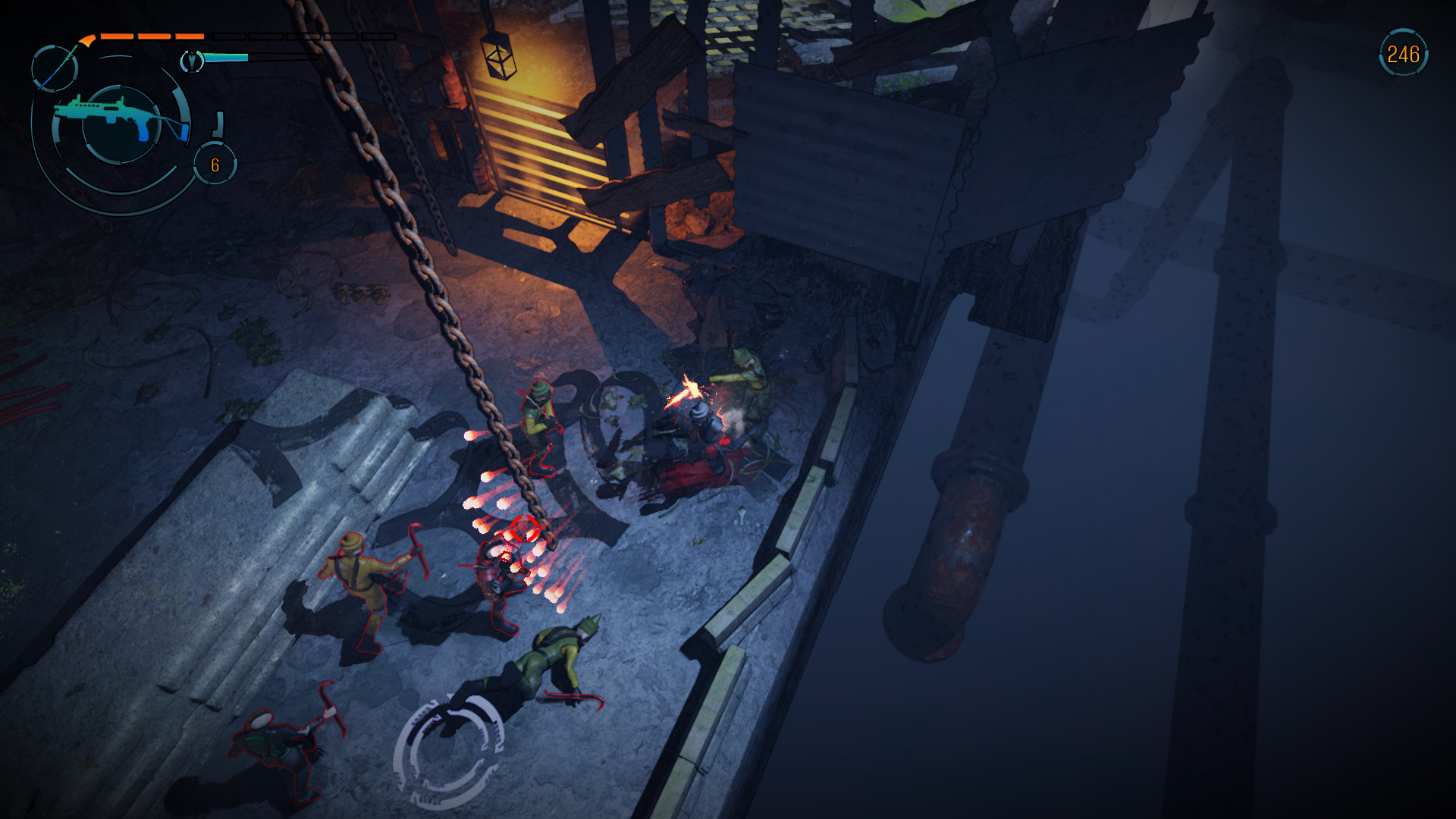Traditionally, an exhibition of developers takes place within the framework of each WN Conference. This was also the case at the autumn session that just took place. We tell you about what interesting projects could be found in the exhibition part of the conference in the material.
I will immediately give a small remark: in total, more than 50 teams participated in the exhibition. We managed to talk and get acquainted with far from everyone (someone was not caught, someone was missed). And, of course, not everyone decided to write about.
Diplomacy is Not an OptionDiplomacy is Not an Option — the first game of the Zelenograd Door 407 team.
This is a colorful low-poly real-time strategy about the construction and defense of the castle. The key feature of the game is to protect your fortification from hordes of thousands.
The developers of Diplomacy is Not an Option were among the most satisfied at the exhibition. Their project successfully performed at the Next Fest demo festival on Steam: several major streamers noticed the game within its framework.
Now, according to the team, there is a queue of publishers lined up for them. That’s just Door 407 is not sure if they need them now, because the main thing — the attention of the gaming community — the developers have achieved themselves.
Diplomacy is Not an OptionINTERPOINT
The INTERPOINT project is the ideological successor of the Portal series.
A first—person shooter game with puzzles. The main tool for solving local problems is a cannon, which sucks energy of various types from objects at the level, and then allows you to shoot it.
The project looks nice. However, due to budget constraints, the team had to purchase most of the graphic content in asset stores. However, according to the developers, they created all the key elements themselves, including the cannon.
The game is being developed by Three Dots Studio, an indie team consisting of four people. INTERPOINT already has a console publisher, this is OverGamez. But, as I understood from the conversation, the team is now also interested in an investor.
INTERPOINTDesignVille
The authors of “Pirate Treasures”, one of the most popular and high-grossing games on the Odnoklassniki social network, are preparing a new casual project.
It’s called DesignVille. This is a merge title in the spirit of Merge Mansion.
The game has the same core gameplay as the original, but it is more convenient to work with quests. Also, the developer — studio TAPCLAP — abandoned the isometric map in the spirit of Playrix games in favor of two-dimensional locations. Even in the novelty there is an opportunity to equip the house with furniture.
The game is close to a worldwide release. Now the developers are polishing the tutorial, and also pondering whether cardboard boxes should be used as objects on the playing field (now this element is found in almost every narrative merge game).
DesignVilleMemory Lost
If there was a contest for the most heroic development story, then Memory Lost could well have won it.
The game is being developed by the Magic Hazard Team studio. Sergey Kuznetsov, its founder and CEO, finances the development on his salary as a programmer in two foreign companies.
The game itself is an isometric action game about battles and shootouts in the dark world of the future. The peculiarity of Memory Lost is the need to constantly change bodies, inhabiting opponents. Each type of enemy has its own set of skills and weapons.
The game is still far from over. Now the team is actively collecting feedback, working on a new interface and processing effects.
Memory LostKids vs Zombies
The project of the Donut Lab studio is not the first time participating in the WN Conference developer exhibition.
Team mobile isometric shooter about battles with zombies — more than two years in development. Since the launch of the development, the studio has managed to attract investments at least twice.
One of the “chips” of the game is the recognizable visual style of the artist Andrey Gordeev, the founder of the studio. In addition to his graphic works, he is famous for his work on the children’s game Green Riding Hood.
The project has reached the finish line. We wish him good luck.
Kids vs ZombiesDarKnot
The history of acquaintance with DarKnot is remarkable for me in three things:
- the developers quickly realized that the author of these lines does not play much action from the gamepad (they constantly had to explain which button to press);
- they noted that if they find money, they can make an AAA-level title out of the game;
- the development of the existing build cost around $ 200-300 thousand.
A third—person horror game. Its solid part is built on solving puzzles and, as far as can be understood from a few minutes of the game, searching for keys in cold corridors. However, the developers promise a whole city to explore in the full version.
DarKnot’s strong point is tactility when solving some puzzles (for example, chess pieces in one of the puzzles had to be literally dragged across the field).
As in the case of INTERPOINT, the disadvantages can include the active use of purchased assets, which is why the game still lacks uniqueness in visual terms.
DarKnotSolargene
Solargene is a simulator of the construction and operation of space stations and bases in the Solar System developed alone (!) by my full namesake.
The player oversees both the construction of modules and compartments, as well as shuttle routes between the moons.
The project looks very interesting because of the desire of the author of the game to present the expansion of humanity into space as realistically as possible. However, so far the game looks difficult and unfriendly to learn and, as it is not difficult to guess, devoid of external gloss.
The game is scheduled for release next year. Now the developer is looking for an investor for the project.
Solargene

